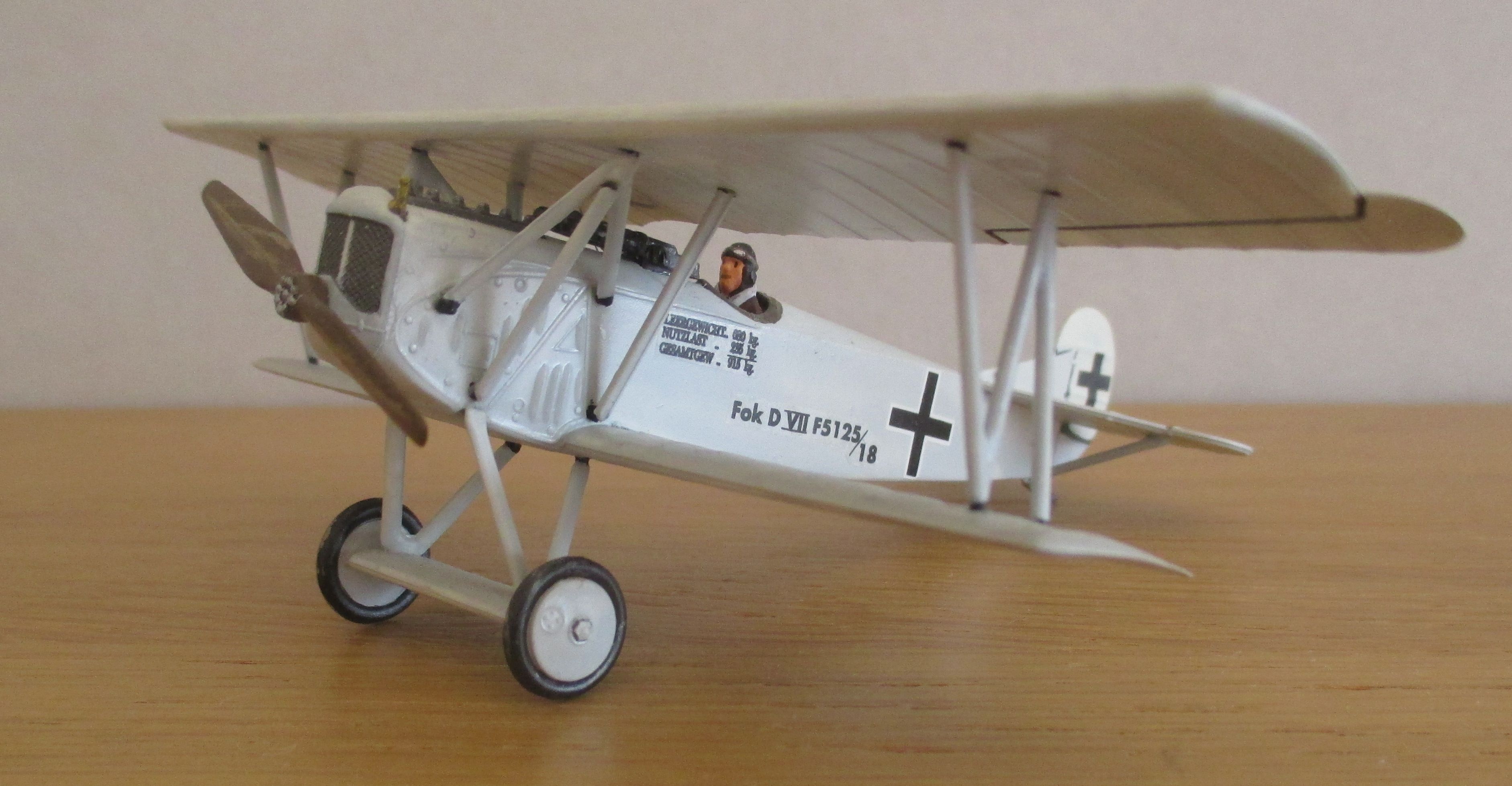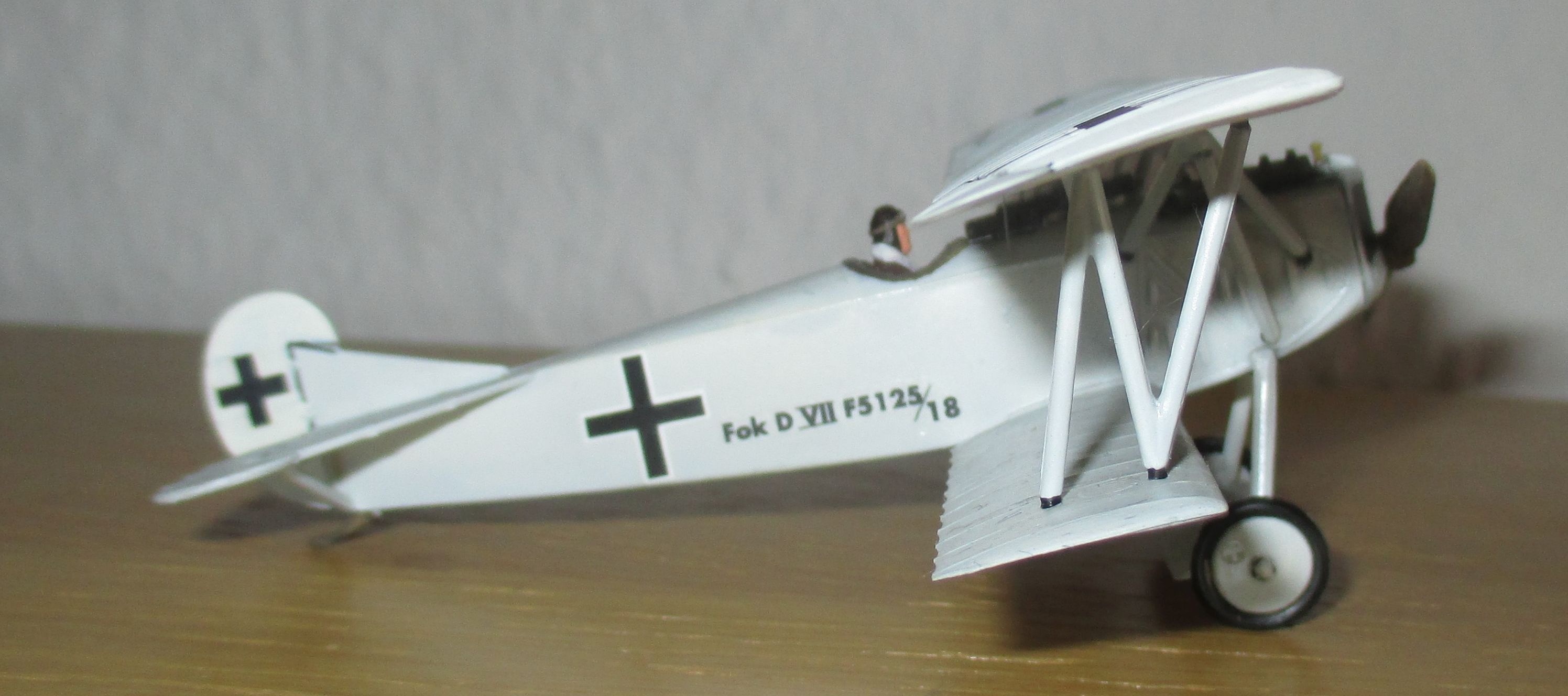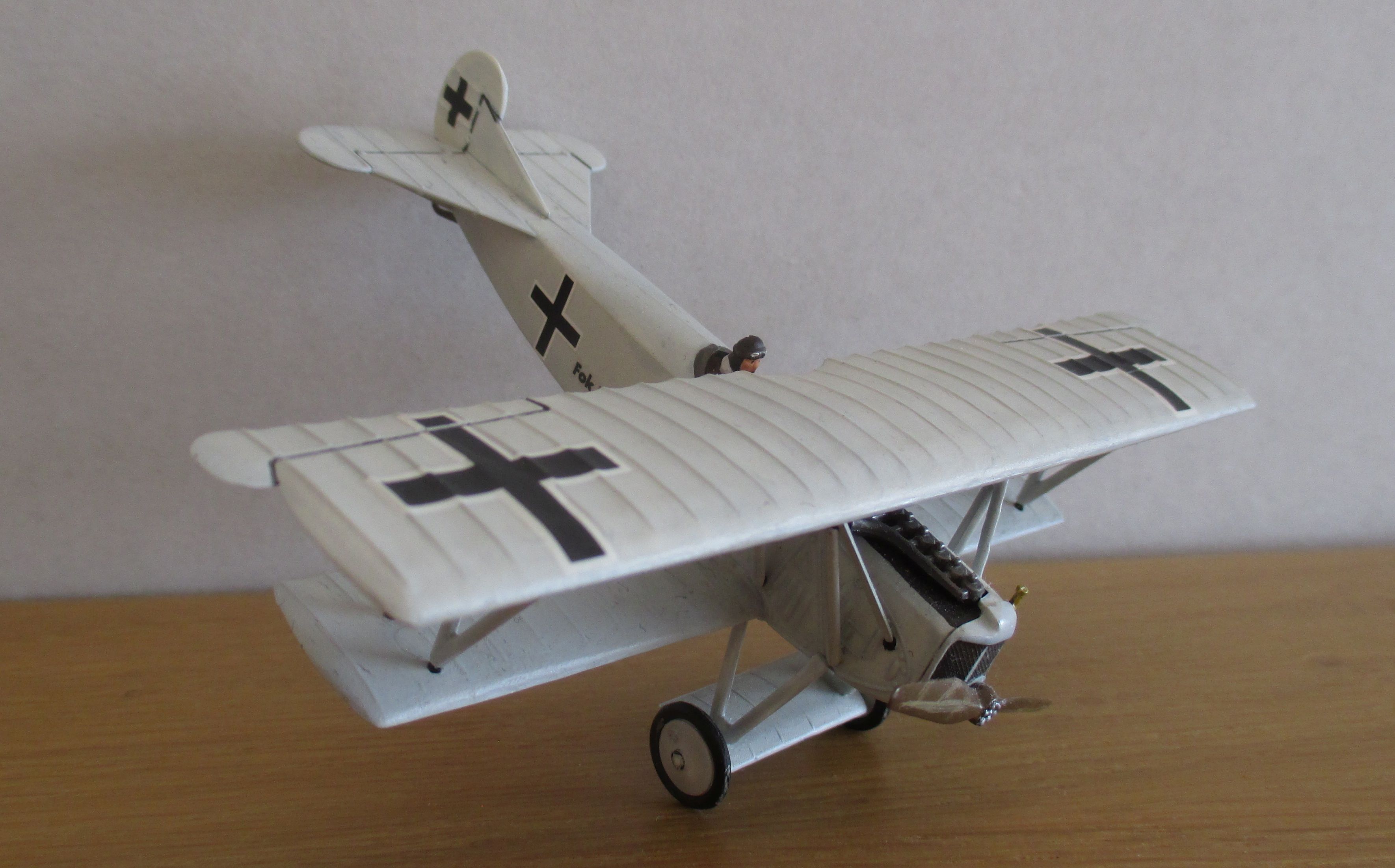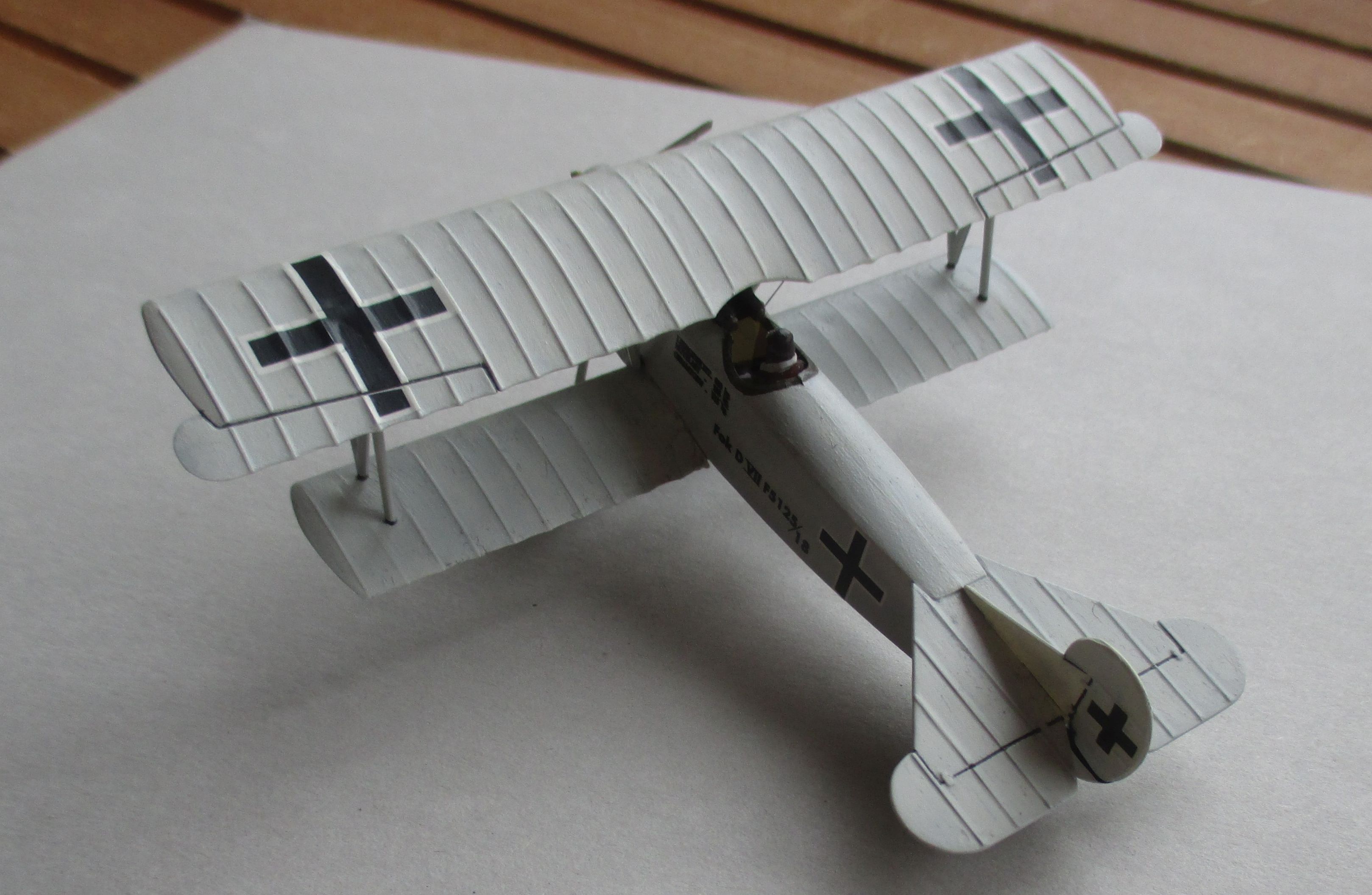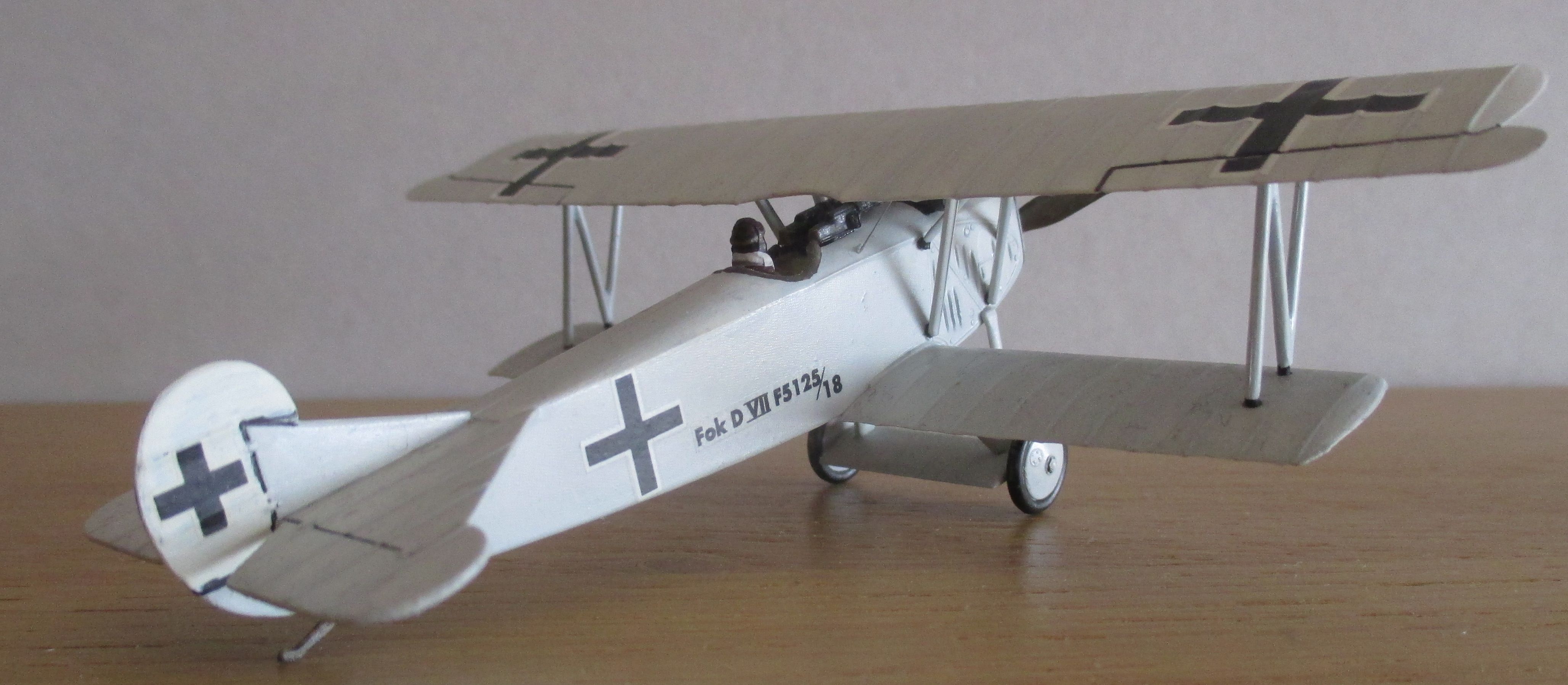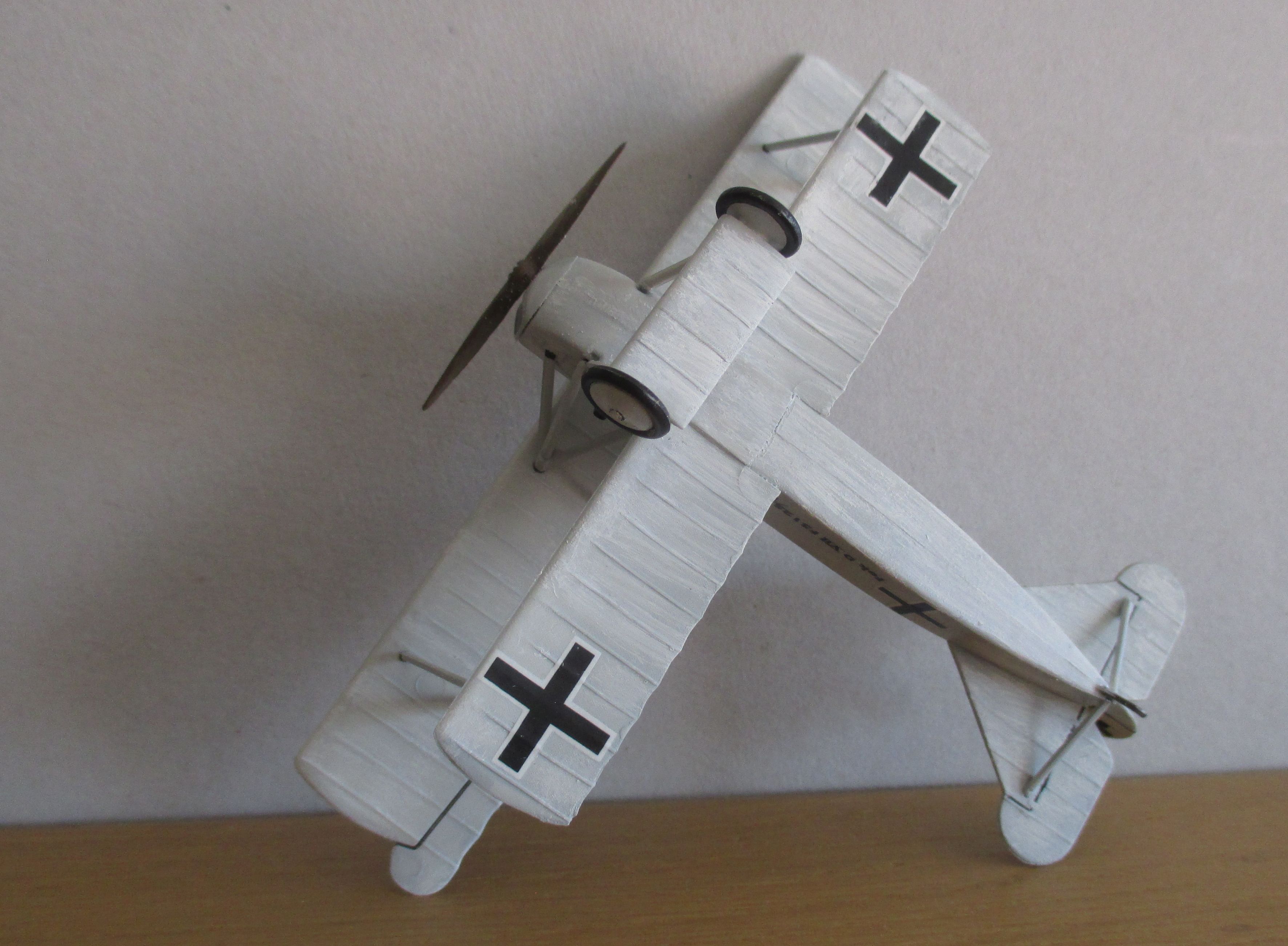Model of the month Mai 2022 Fokker D VII
The best for last: The Fokker D VII
The Fokker D VII in 1/72 from Revell. The original 104 years, the model kit about half as old, and this example was built about 30 years ago...
From Original to the Modell
An independent part of the collections of the Aviation Museum Hanover-Laatzen are the more than 1,000 scale models, mainly of the international standards 1/72 and 1/48.
Such true-to-the-original miniatures enable viewers of museum technology history to get an "overview", not only of the individual exhibit (sometimes even as the only possibility of a three-dimensional display if there is no longer a preserved original), but also of lines of development in aircraft construction by means of the possible arrangement and juxtaposition here; sometimes they even close gaps in the presentation of the originals. Their craftsmanship alone is a pleasure to behold.
Today we present the Fokker D VII as "Model of the Month". Various miniatures of this probably best German fighter plane in World War 1 can be found in the showcases of exhibition hall 1.
Translated with www.DeepL.com/Translator (free version)
The black metal struts on Göring's machine were also painted white, at least at times.
The Model: Fokker D VII (Revell, 1/72)
This kit of the US-American Revell company with 29 parts and decals was part of the Californians' assortment since the 1960s. From time to time the kit, unchanged in casting, got a new decal set and a new cardboard image, while it accompanied generations of young modelers. The struts and wing profiles, which are clearly too strong by today's standards, ensured a high stability of the model and a low frustration rate of the customers.
Our example presented here in the picture was brought to the European market in 1993 by Revell AG in Bünde and offered two decorations to choose from: the colorful aircraft of First Lieutenant Rudolf Berthold and the all-white aircraft of the last Commodore of JG 1, Hermann Göring, both from 1918.
All in all, 680 kg of wood, fabric, metal and rubber - that, excellently combined, was enough to dominate the skies in 1918... The replica gets by with a few grams of polystyrene.
The original: The best for last
After the first real fighter in service, the E I/ II/ III of 1915/16, Fokker Flugzeugwerke also built the most powerful fighter of the First World War: The Fokker D VII, winner of the German fighter competition in January 1918. This plane had been developed by chief designer Reinhold Platz with substantial participation of the founder of "Fokker Aeroplanbau" in Schwerin, Anthony Fokker himself, to equalize the air superiority gained by the Allies on the Western Front in late 1917.
The conventionally designed single-seat biplane with rigid undercarriage and 6-cylinder in-line Mercedes D IIIa engine, later also a BMW IIIa, was armed with two synchronized 08/15 machine guns. With a length of 6.95 m, it had a wingspan of 8.90 m; its top speed was 205 km/h with the BMW 6-cylinder in-line engine. The fuselage was fabric-covered over welded tubular steel frames, as had been done in previous Fokker designs. The wings were made of wood, also fabric-covered and braced to each other as well as to the fuselage. The vertical and horizontal stabilizers were fabric-covered tubular steel structures. This resulted in a remarkable structural strength of the aircraft, which manifested itself in superior stability with high maneuverability.
The wingspan of 8.90 m has been reduced in the model to just over 12.3 cm. The wings of the original were effectively cantilevered, but additionally braced among each other.bt.
Technically mature
The first D VIIs reached operational units in April 1918 and by June were already considered by British and French pilots to be the most dangerous enemy. Superbly balanced, fiercely efficient and good-natured, the D VII was extremely popular with its pilots, who were still achieving considerable numbers of kills in the last six months of the war with what was probably the most technically advanced aircraft of its time.
In fact, the Fokker D VII was the only aircraft type explicitly mentioned at the top of the Allied list of armaments to be delivered by the defeated Reich. To prevent the complete dismantling and removal of the production facilities by the victorious powers, Anthony Fokker and his staff transported what was transportable by rail to his Dutch homeland, which had remained neutral. Here he reestablished the company in Amsterdam - and brought the D VII to the Dutch armed forces as an "inaugural gift". Production of the type then continued for another nine years until 1928, and by the mid-1930s the last of the approximately 3,300 built were in active service. Among the 19 countries that eventually used this type, besides Germany and the Netherlands, were Denmark, Switzerland and the United States. The British and French intensively tested their prey machines, and the knowledge gained from this was incorporated into the following designs.
sb
What at first glance appeared somewhat angular on the D VII proved to be a compact force in action. This allowed the machine to fire stably "hanging from the propeller" upward
Bottom view of the Fokker D VII. This perspective also conveys the no-frills functionality of the design.

